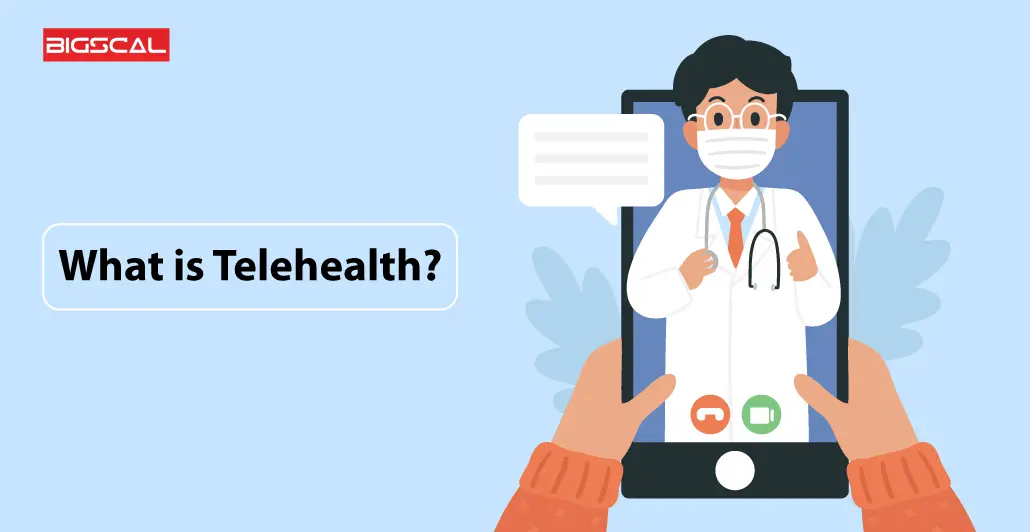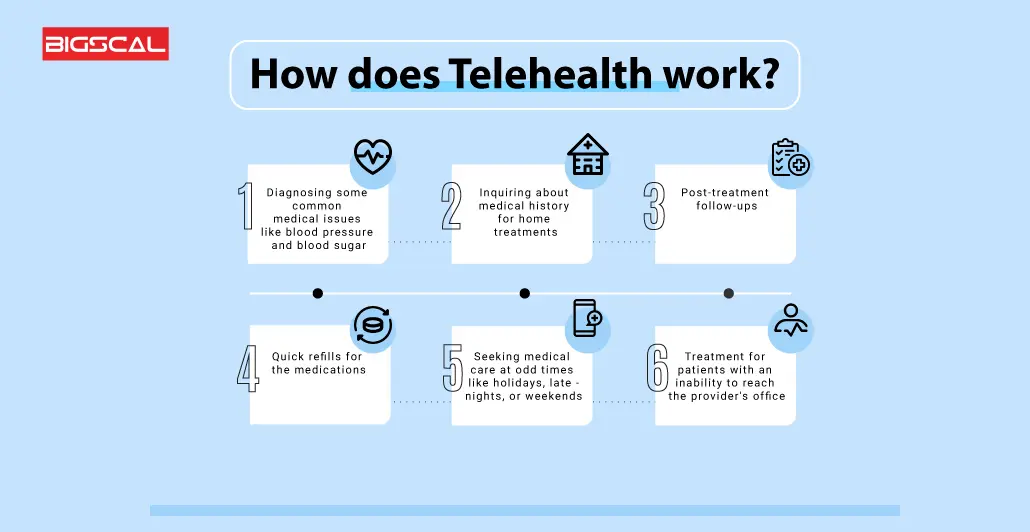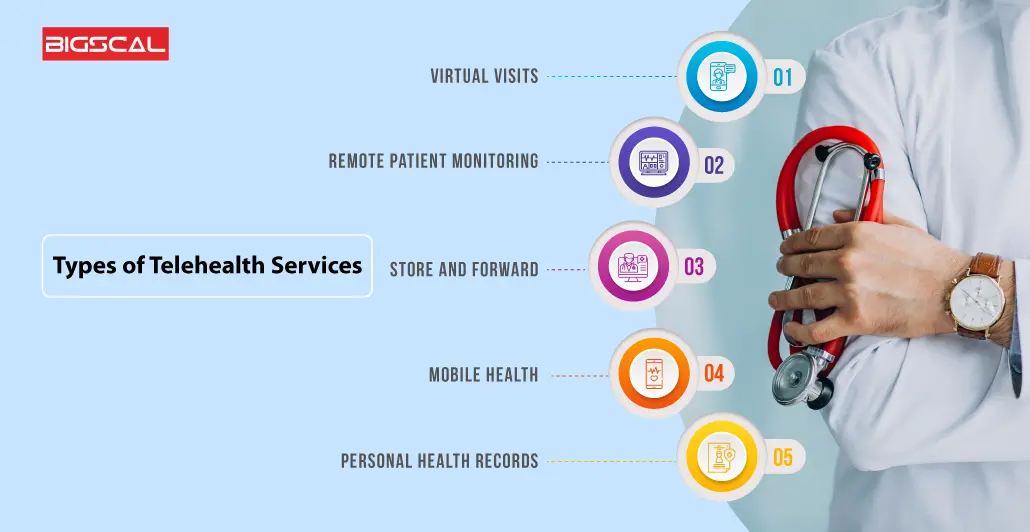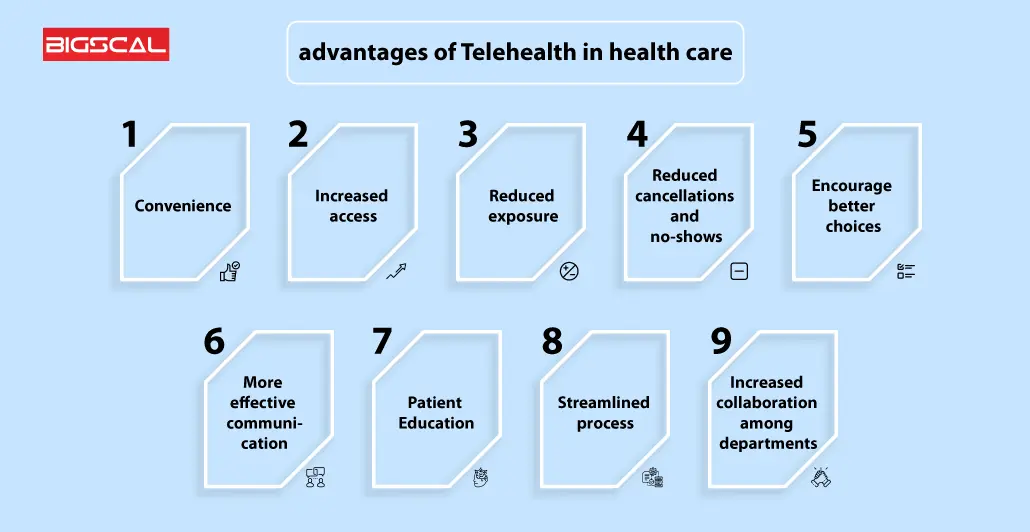What is Telehealth Technology? Everything You Need to Know
Quick Summary: Everyone is thinking, what is telehealth technology? It is a technology that uses digital communication tools to provide remote medical services and consultations. It encompasses video calls, messaging, and data sharing, allowing patients to access healthcare from their homes. This innovation improves accessibility and convenience while maintaining healthcare quality.
Introduction
The majority of people have heard about the fact that the introduction of technology is changing the modern world. It has affected not only how we stay in touch with our families but also how we learn. Hence, technology has a significant role in where the world stands today. It has also impacted how we search for any information, even health-related. Telehealth tools are taking over the healthcare industry.
Generally, people need help to find out telehealth technology? Well, to simplify, it is a point where technology meets healthcare. Innumerable tools are offered these days to manage personal health and care and receive the necessary medical care. Many people already found telehealth technologies to be a blessing during the outburst of the pandemic. And from then, people still tend to use it even for personal health.
Although the critical aspect of Telehealth is to deliver health care using technology but is not only confined to a single type, as virtual visits can permit clinical interaction to happen at any geographical distance, the technology you choose can determine how these actions occur. Keep reading to dive deeper into the uses and types of telehealth services.
What is Telehealth Technology?

Telehealth services use digital information and technology to gain access to health care services remotely and manage chronic conditions. The technologies people use to seek healthcare services might include mobile devices, computers, and wearables. All of these are technologies that you get to operate from home.
It can also consist of mobile vans that help primary care providers deliver services in rural areas. Telehealth can also be the means that can help your own primary care provider or health care delivery provider improve or support health care delivery.
The aim of telehealth services might include below mentioned things:
- Making health care easily accessible to people in remote and underserved areas in the country
- Keeping both patients and healthcare providers safe from infectious diseases like covid 19.
- Offer primary care for many issues like blood pressure and blood sugar.
- Make digital healthcare activities available for people with limited mobility who cannot attend personal visits.
- .Better accessibility to medical specialists.
- Enhances communication between medical professionals and the person that is seeking care. These communication technologies also facilitate excellent coordination among teams.
- Provide public health information for self-care and management.
Since the pandemic struck the world, it has widely affected the healthcare system. Since then, the adoption of telehealth services has increased. And this trend seems to continue. Hence Telehealth is more used these days.
What is telehealth technology working process?

It is a straightforward affair to understand what is telehealth technology and how it works. It means using telecommunication technology to enable the system of remote healthcare. Hence it makes it possible for healthcare providers to offer telehealth services to patients anytime and anywhere. Some situations where the health care professionals find telemedicine to be more useful are:
- Diagnosing some common medical issues like blood pressure and blood sugar.
- Inquiring about medical history for home treatments.
- Post-treatment follow-ups.
- Quick refills for the medications.
- Seeking medical care at odd times like holidays, late nights, or weekends.
- Treatment for patients with an inability to reach the provider’s office.
Hence using telecommunication healthcare is easier than one could have thought. Mobile health apps traditionally employ online accounts or toll-free phone numbers. With the help of these communications technologies, patients can request virtual visits and submit patient health data, and then primary care providers can either accept or decline it.
Telemedicine is one of the most spectacular technologies suitable to serve the best health outcomes. Before using telehealth technologies, health professionals should assess medical information appropriately and review symptom-related information.
Read more: When Was Telemedicine Invented? History Of Telemedicine
Types of Telehealth Services

Virtual visits
Many telehealth care providers tend to offer remote patient monitoring. Some clinics provide remote patient monitoring for ease of virtual visits. It can help you seek clinical services over telecommunications technologies via mobile devices.
Telecommunication healthcare can help serve many chronic conditions like skin diseases, diabetes, depression, and many more; rather than in-person appointments, these help seek care while you feel an early warning of any condition.
Before you go in person, you can transmit vital signs or fill out an online form through electronic devices. Providers will also ensure you have the telecommunications technology you need. You will have to ensure you download all software updates.
Later with the help of remote care, they can make in-person visits to help address health care concerns. You just need a mobile device, tablet, or computer to join an online or virtual visit anywhere.
Remote patient monitoring
Many technologies that facilitate the electronic transmission of health record transmission let providers check electronic health records remotely. The list of these technologies consists of the following:
Web-based or even mobile health apps facilitate video chat and uploading of health-related data. Hence you can add all health-related data for specific conditions to ensure better health outcomes.
Devices that measure and transmit vital signs and data to the provider.
Wearable devices that can automatically store and forward the data. These devices can record physical activity, sleep, and heart rate data.
Devices for home monitoring for older adults that experience changes in daily life.
Devices that send reminders for activities and medicine consumption.
Store and forward
Store and forward telemedicine apps help patients record data that can be accessed anytime. All medical data, such as the medical history, imaging, test results, and much more, can be stored and sent over vast distances. The best part about this app is it does not require the same attention from both ends. Any person from the field can access the patient’s health data, upload it and leave it behind for detailed comprehension by the provider.
What is telehealth technology most favored for? You don’t have to book an appointment with this technology. Hence this is best for solving minor issues. Departments like Pathology, dermatology, and many others depend on telemedicine apps. With internet access, this system can record particular patient care. Although not all platforms are interoperable, their widespread technology ensures better technology.
Mobile health
The primary care clinic you visit might have a mobile health app. These portals can help you seek virtual visits more safely. It can be a great way for:
- Send a message to the physician
- Prescription refills
- Check test results and data from earlier visits
- Schedule appointments and appointment reminders
If the primary care provider you are visiting has an extensive healthcare system, you can also contact a specialist through a portal.
Personal health records
An electronic health record system is one of the types of telemedicine that collects records of your health information and maintains it for the future. One can view it easily anytime through mobile devices or other web-enabled devices. It also helps you review your lab results, X-rays, and notes from the doctor. And you can share that store and forward data with a specialist too.
This information is integrated with security practices, which makes data private and keeps away from cyber threats. Furthermore, files are effortlessly transferred in internal departments and able to administrate many people. Entered information by automated tools reduces errors and reduces replicate entries. Additionally, it increases the task speed.
In any emergency, these health records can quickly provide insight into health-related services you have gotten in the past. It would also contain all the other vital data such as allergies, medications, etc.
What are the advantages of Telehealth in health care?

Convenience
Many patients need more time from their jobs and work for the scheduled appointment with medical professionals. Also, usage of clinical services of Telehealth can save their time spent traveling and the expenses associated with it. Hence it could be a great choice when dealing with minor problems that do not need urgent care.
Increased access
Patients living in rural areas can now obtain specialty healthcare services with Telehealth. They can talk to medical specialists and even ensure post-surgery care with remote patient monitoring. Also, post-surgery follow-up can be done on video chat without traveling.
Hence, patients living in underserved areas might be unaware of telehealth technology ? But they can also access primary dental care and mental health services through it. Also, patients whose physical health does not support them can gain easy medical care.
Reduced exposure
Telehealth refers to services where there is no physical contact. Hence it can help deal with infectious diseases without spreading them.
Reduced cancellations and no-shows
When you use telehealth technologies, patients are less likely to cancel appointments or not show up. On the other hand, providers give first priority to online patients and doctors can consult them from anywhere.
Hence, it maintains steady flow of income and contributes to improve client satisfaction.
Encourage better choices
Telehealth can help provide health information services for patients to make the best lifestyle choices. Moreover, this provides more options to connect with providers such as video conferencing, messages, and audio calls. This is a fantastic software that allows patients to pay and get receipts from digital devices.
Telehealth can help provide health information services for patients to make the best lifestyle choices.
More effective communication
The engagement frequency of patients with primary care providers is more in the case of Telehealth. It helps doctors get the entire view and treat them with the best care. This virtual communication helps them understand the place where they live for better treatment.
Patient Education
Telehealth does not only let you gain quality health information services but also provides different ways to healthcare education and enhance the outcome of their treatment plans.
Streamlined process
Experts use telehealth services to make the patient experience smoother while dealing with problems like chronic conditions. It does so by reducing wait times.
Increased collaboration among departments
Hospital premises follow a specific code of conduct to communicate with patients. Hence telehealth communications technologies can help let different departments share data to serve better results to patients.
How can Bigscal help with telehealth app development?
Bigscal offers comprehensive healthcare telemedicine solutions. Our services cater to the evolving healthcare landscape. We leverage the expertise of our developers in software development to create secure, user-friendly platforms that connect patients and health care providers seamlessly. Hence our skilled team designs customizable interfaces, ensuring a tailored user experience.
Bigscal’s focus on data privacy guarantees HIPAA compliance, safeguarding sensitive medical information. With integrated video conferencing, real-time messaging, and appointment scheduling features, we enhance remote consultations and remote monitoring. By optimizing app performance and ensuring scalability, Bigscal empowers healthcare organizations to deliver efficient virtual care, expanding their reach while maintaining top-notch patient care standards.
Conclusion
By now it might be clear to you that what is telehealth technology? It represents a transformative leap in healthcare delivery, redefining the patient-provider relationship. Its seamless integration of communication tools and medical expertise transcends geographical boundaries, making quality care accessible to all. As we navigate an evolving healthcare landscape, Telehealth offers convenience, cost-effectiveness, and timely interventions. While embracing its potential, addressing privacy concerns and ensuring equitable access is crucial. Telehealth’s ability to amalgamate innovation with care underscores its significance in modern medicine. As technology advances, so does the promise of Telehealth, shaping a future where healthcare is genuinely borderless and patient-centric.
FAQ
What is telehealth technology?
Telehealth refers to using digital communication tools and platforms to provide remote healthcare services, allowing patients to consult with healthcare professionals without needing to be physically present in a medical facility.
What is the role of telehealth services?
Telehealth services play a crucial role in delivering medical care remotely. They enable patients to receive medical advice, consultations, diagnoses, and even treatment plans from healthcare professionals using various communication technologies.
What tools are used for Telehealth?
Telehealth utilizes various tools to facilitate virtual medical consultations and healthcare management, including video conferencing platforms, mobile health apps, wearable devices, electronic health records (EHR) systems, and remote monitoring devices.
What is the difference between Telehealth and telemedicine?
While both terms are often used interchangeably, there’s a subtle distinction. Telehealth is a broader concept that encompasses all remote healthcare services using telecommunications technologies, including medical and non-medical aspects. Telemedicine, on the other hand, refers explicitly to diagnosing and treating medical conditions remotely using technology.
What platform is used for Telehealth?
Various platforms are used for Telehealth, such as video conferencing tools like Zoom and Microsoft Teams and dedicated telehealth platforms like Doxy.me, Teladoc, and Amwell. The choice of platform depends on the healthcare provider’s preferences and needs.









